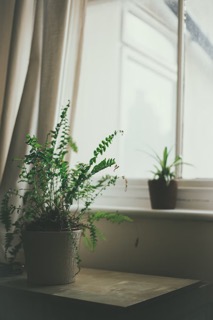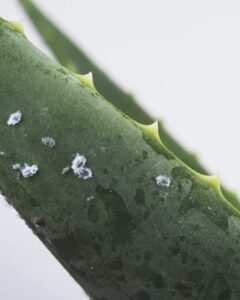Nephrolepis cordifolia, commonly known as the tuberous sword fern, is a popular houseplant known for its attractive, feathery fronds. It is native to tropical regions and is an evergreen plant The tuberous sword fern can thrive in a range of indoor conditions and is commonly grown as houseplants due to its attractive appearance and low-maintenance needs. They prefer bright, indirect light, a warm and humid environment, and evenly moist soil. Nephrolepis cordifolia are also known for their air-purifying qualities, and they can help to clean the air in your home by removing harmful pollutants.

To grow a Sword Fern indoors, you’ll need to provide bright, indirect light and maintain a warm, humid environment with evenly moist soil. Sword Ferns are not suitable for growing in low-light conditions, and they do not tolerate dry air well. By following these guidelines, you can keep your indoor Sword Fern healthy and attractive for many years to come.
Table of Contents
Tips on how to care for a Nephrolepis cordifolia (tuberous sword fern)
Here are some tips for caring for a Nephrolepis cordifolia:
- Light: tuberous sword ferns prefer bright, indirect light. Avoid direct sunlight, which can scorch the fronds.
- Water: Keep the soil evenly moist but not waterlogged. Avoid letting the soil dry out completely between waterings. Tuberous sword ferns are native to tropical regions and do not tolerate drought well.
- Humidity: tuberous sword ferns prefer humidity. You can increase the humidity around your plant by misting it regularly, using a pebble tray, or grouping plants together.
- Soil: tuberous sword ferns prefer well-draining, evenly moist soil. A good potting mix for ferns contains equal parts peat moss, perlite, and coarse sand.
- Temperature: tuberous sword ferns prefer warm temperatures between 60 and 75°F (15-24°C). They are sensitive to cold temperatures, so avoid exposing them to drafts or placing them near air conditioning vents.
- Fertiliser: they do not need frequent fertilization. A balanced, water-soluble fertiliser can be applied every 4-6 weeks during the growing season (spring and summer).
- Pruning: To keep your tuberous sword ferns looking their best, prune off any yellow or brown fronds as needed.


By following these guidelines, you can keep your Nephrolepis cordifolia healthy and attractive.
Can Nephrolepsis cordifolia grow in dry areas?
No, Nephrolepis cordifolia, prefers a moist environment and does not tolerate dry conditions well. This plant is native to tropical regions and requires consistently moist soil to thrive. If the soil becomes too dry, the fronds will start to brown and wilt. To ensure that your tuberous sword fern stays healthy, it’s important to keep the soil evenly moist but not waterlogged. Additionally, increasing the humidity around your plant by misting it regularly, using a pebble tray, or grouping plants together can help to create a more hospitable environment.
What pests or diseases can affect the growth of the nephrolepsis cordifolia?
Nephrolepis cordifolia is generally a hardy and low-maintenance plant. However, like all plants, it is susceptible to certain pests and diseases. Here are some common problems that can affect its growth:
Pests
- Spider mites: Small, red or brown mites that spin webs on the undersides of fronds. They can be controlled with regular spraying of water, insecticidal soap, or neem oil.
- Mealybugs: Small, white, cottony pests that feed on plant sap. They can be controlled with a cotton swab dipped in alcohol or with insecticidal soap.
- Thrips: Small, slender insects that feed on plant tissue and leave behind a black, sticky residue. They can be controlled with insecticidal soap or neem oil.
Diseases
- Root rot: Caused by overwatering or poorly draining soil, which can lead to fungal growth. To prevent root rot, ensure that the soil is well-draining and avoid overwatering.
- Powdery mildew: A fungal disease that causes a white, powdery growth on the fronds. To prevent powdery mildew, ensure that the plant has adequate air circulation and avoid getting the foliage wet when watering.

To prevent pest and disease problems, it’s important to keep your tuberous sword fern healthy and stress-free by providing it with proper care and maintaining good hygiene in your growing area. Regular inspections of your plant can help you catch any problems early when they are easiest to treat.
What other plants can you grow with the nephrolepsis cordifolia?

Nephrolepis cordifolia is a versatile plant that can be grown with a variety of other houseplants. Here are some plants that complement the well:
- Devil’s Ivy (Epipremnum aureum): A fast-growing, vining plant with green or variegated leaves.
- Peace Lily (Spathiphyllum): A shade-loving plant with white spathes and glossy, dark green leaves.
- Common Ivy (Hedera helix): A trailing plant with dark green leaves and small, yellow-green flowers.
- Snake Plant or mother-in-law’s tongue (Sansevieria): A slow-growing succulent with upright, stiff leaves in shades of green, yellow, and gray.
- Sword Fern (Nephrolepis exaltata): A lush, trailing fern with delicate fronds.
- Philodendron: A large genus of trailing and climbing plants with glossy, green leaves.
- ZZ Plant (Zamioculcas zamiifolia): A slow-growing succulent with shiny, green leaves.
By pairing the tuberous sword fern with other plants that have similar light and humidity requirements, you can create an attractive and low-maintenance indoor garden.
Conclusion
In conclusion, Nephrolepis cordifolia, or tuberous sword fern is a popular and low-maintenance houseplant that can thrive indoors with proper care. This plant prefers bright, indirect light, a warm and humid environment, and evenly moist soil. Sword Ferns are not well-suited to low-light conditions or dry air, and it’s important to keep the soil evenly moist to prevent root rot. To keep your tuberous sword fern healthy, it’s also important to watch for pests and diseases and to address any problems promptly. By following these guidelines, you can enjoy the attractive and air-purifying benefits of this versatile fern in your indoor garden.
